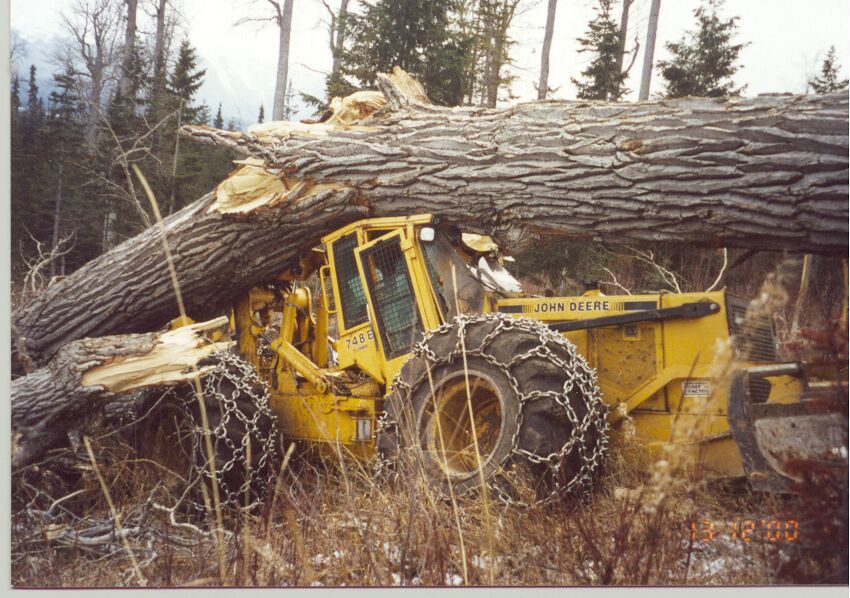clinchscavalry
ArboristSite Operative
I started to post a new topic but found this. My job with the county road dept. is supposed to be motor grader operator, but I made the mistake of demonstrating that I could run a chainsaw without cutting my leg off. Now, it seems I'm the designated saw man. We actually have a good bit of cutting, mostly trees that fall across roads, others that are on the r/w where we mow, etc. However, we also have a good bit of trees to fell that are either dead next to the road, leaning over the road or, most likely, called in by some citizen who thinks they are dangerous. This job is very, very political.
Naturally, all of our felling jobs are dangerous (maybe technical is more precise) being near roads, power lines, houses, you name it. Yesterday we had to cut a large pine and could only fell it uphill away from the road, power lines , a neighbor's fence, mailbox, and driveways, as usual. I used a couple plastic wedges to help it start the right way, and we (dangerously) used a backhoe boom to do the rest. The backhoe operator and myself have a pretty good track record (so far), and we make a good team. I have convinced him to go very gently and let me do most of the work, especially on dead trees. However, there was the time his bucket hung on a limb stub we cut off, and the huge tree was carrying the backhoe with it - right on top of me That's another story though.
That's another story though.
Anyho, I'd like to get a set of felling wedges if there is such a thing or several of the same size and type. Mine have some serious saw cuts in them now I know some of you scoff at using wedges, but my felling jobs all tend to be a little less stressful when I use them.
I know some of you scoff at using wedges, but my felling jobs all tend to be a little less stressful when I use them.
Suggestions appreciated!
PS Please don't tell OSHA we exist
Naturally, all of our felling jobs are dangerous (maybe technical is more precise) being near roads, power lines, houses, you name it. Yesterday we had to cut a large pine and could only fell it uphill away from the road, power lines , a neighbor's fence, mailbox, and driveways, as usual. I used a couple plastic wedges to help it start the right way, and we (dangerously) used a backhoe boom to do the rest. The backhoe operator and myself have a pretty good track record (so far), and we make a good team. I have convinced him to go very gently and let me do most of the work, especially on dead trees. However, there was the time his bucket hung on a limb stub we cut off, and the huge tree was carrying the backhoe with it - right on top of me
Anyho, I'd like to get a set of felling wedges if there is such a thing or several of the same size and type. Mine have some serious saw cuts in them now
Suggestions appreciated!
PS Please don't tell OSHA we exist






 Those of you who can, go ahead and do it. Meanwhile, the poor planners like me will drag on to work
Those of you who can, go ahead and do it. Meanwhile, the poor planners like me will drag on to work